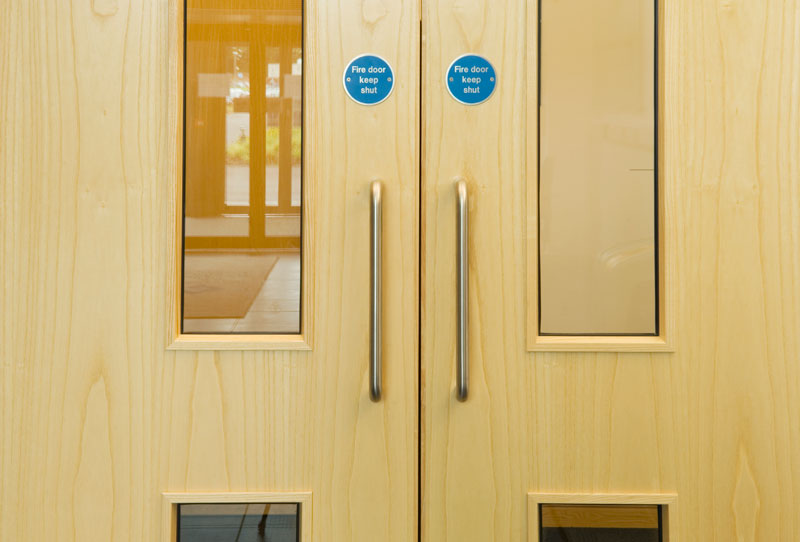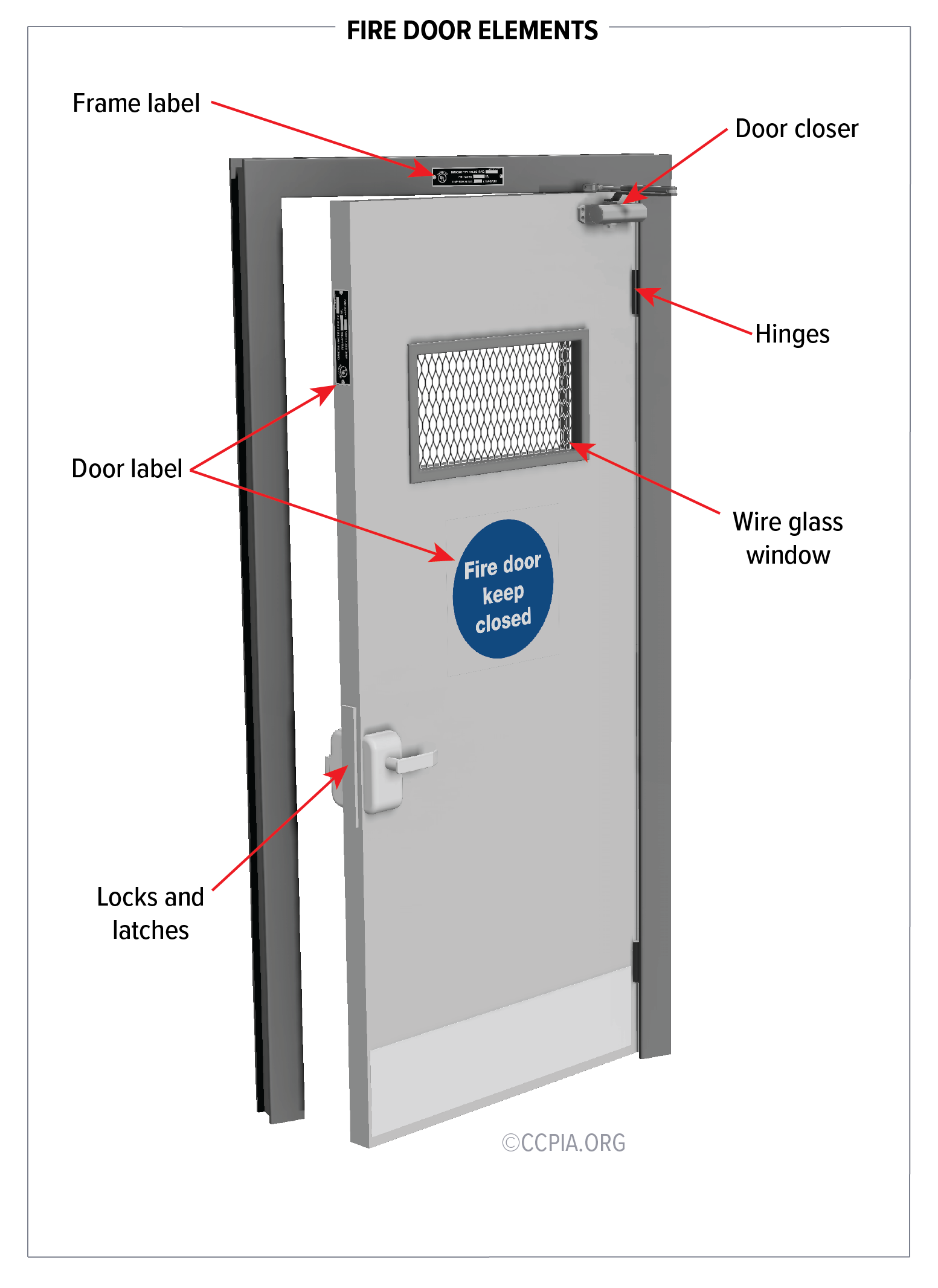Understanding the Different Sorts Of Fire Doors for Improved Safety
From typical fire-rated doors that shield against fires to acoustic fire doors that offer both fire resistance and audio insulation, each kind is designed with details features in mind. The integration of glass fire doors and the need of fire leave doors even more highlight the multifaceted nature of fire door applications.
Criterion Fire-Rated Doors
Common fire-rated doors are a critical part in guaranteeing structure safety and conformity with fire laws. These doors are specifically created to stand up to the spread of fire and smoke, offering essential defense to passengers and building. Created from products such as steel, gypsum, and fireproof wood, they can withstand heats and maintain structural stability for differing periods, generally varying from 20 mins to three hours.
The performance of typical fire-rated doors is evaluated by their fire-resistance score, which is established through extensive screening under controlled conditions. This ranking indicates the duration during which the door can consist of fires and heat, thereby enabling added time for evacuation and emergency situation action. In addition, these doors typically include intumescent seals that increase when subjected to warmth, additional stopping the passage of smoke and toxic gases.
Installment of common fire-rated doors must follow stringent building ordinance and criteria, such as those set by the National Fire Security Organization (NFPA) and the International Building Regulations (IBC) Regular inspections and maintenance are necessary to make certain that these doors function appropriately in an emergency. Properly set up and maintained fire-rated doors are essential in enhancing general building safety and minimizing fire-related risks.
Smoke Doors
Smoke doors play a crucial function in fire security by especially dealing with the containment of smoke, which is often more hazardous than flames throughout a fire occurrence. Smoke inhalation can bring about extreme respiratory issues, disorientation, and also casualties, making smoke doors an important component in emergency planning. These doors are designed to restrict the movement of smoke between different compartments within a structure, therefore providing more secure evacuation paths and minimizing potential damages to residential or commercial property.

Additionally, smoke doors are commonly furnished with automated closing devices, caused by smoke alarm or emergency alarm, to guarantee they close promptly during an emergency. By having smoke, these doors help maintain lower temperature levels and more clear visibility in getaway courses, making them an indispensable component in extensive fire safety techniques. Their correct installation and upkeep are important to guarantee optimal efficiency when most needed.
Acoustic Fire Doors
Acoustic fire doors give a twin function in both fire security and sound depletion, making them a beneficial addition to buildings where noise control is crucial. These doors are engineered to not just meet rigorous fire resistance standards however additionally to significantly lower audio transmission, therefore improving overall building efficiency.
The building of acoustic fire doors normally involves a mix of thick materials and specialized seals. Additionally, the door framework and seals are designed to preserve acoustic honesty while providing durable fire resistance.
Acoustic fire doors are specifically valuable in settings where privacy and silent are paramount, such as health centers, resorts, and universities. They assist to maintain a tranquil ambience by reducing the transmission of noise in between rooms or hallways while ensuring compliance with fire safety guidelines. In enhancement to their functional benefits, these doors can be customized to mix perfectly with the building aesthetic appeals of a structure, making certain that safety and security does not come with the expense of layout.

Glass Fire Doors
Glass fire doors, frequently made use of in modern architectural styles, supply a mix of transparency and security that traditional fire doors can not match. These doors combine the visual allure of glass with important fire-resistant homes, making them a perfect option for contemporary buildings. Engineered with specialized fire-resistant glazing, glass fire doors can imp source withstand high temperatures and avoid the spread of fires and smoke for a specified duration, typically ranging from 30 to 120 minutes.
The building of glass fire doors involves several layers of solidified glass, commonly treated with intumescent products that broaden when revealed to warmth, additional enhancing their fireproof capacities. These doors are not just practical in terms of fire security however also enable natural light to penetrate with rooms, contributing to energy performance and an extra welcoming environment.
In addition, glass fire doors can be integrated with numerous framing products such as steel or light weight aluminum, which give extra architectural support and longevity. Using such doors is particularly beneficial in industrial, instructional, and medical care setups where exposure and security are critical. By satisfying rigorous fire safety and security laws and maintaining an open, modern-day visual, glass fire doors stand for an essential development in fireproof construction.

Fire Leave Doors
Fire leave doors are a crucial part of any kind of building's safety infrastructure, created to provide a swift and protected ways of egress during emergency situations. These doors are purposefully located to guarantee residents can quickly and securely leave the properties in case of a fire or other harmful scenarios. Unlike common doors, fire escape doors need to stick to rigid governing standards, guaranteeing they can perform reliably under pressure.
A key function of fire exit doors is their ability to open conveniently from the within, usually geared up with panic bars or push pads. This design helps with rapid evacuation and protects against traffic jams that can take place throughout high-stress scenarios. Furthermore, fire exit doors are typically great post to read constructed from fire-resistant materials to avoid the spread of fires and smoke, therefore supplying critical extra time for evacuation and firefighting initiatives.
Another crucial aspect is the clear signs and lighting related to fire escape doors. Correct signage ensures that these exits are easily identifiable also in low-visibility conditions. Regular maintenance and inspections are critical to ensure that these doors operate correctly when required. Ultimately, the efficiency of fire escape doors is a crucial element in protecting lives and minimizing home damage throughout emergency situations.
Final Thought
In recap, understanding the different kinds of fire doors, including standard fire-rated doors, smoke doors, acoustic fire doors, glass fire doors, and fire departure doors, is crucial for improving safety in structures. Each type provides particular benefits, from fire and smoke containment to appear insulation and visual integration, ensuring extensive protection. Fire doors. Routine maintenance and compliance with safety and security standards are essential to assure their efficiency in guarding residents and facilitating risk-free evacuation her response throughout emergencies